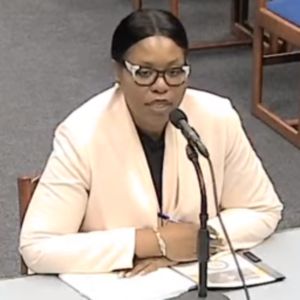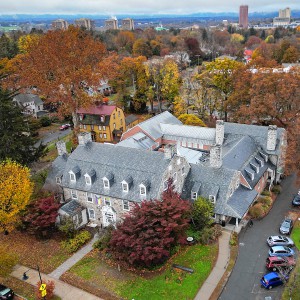Guest column by Bart Bouricius: How much ‘managing’ do public forests need
| Published: 03-31-2023 2:46 PM |
A number of recent contributions to these pages have argued that each patch of forest should be professionally managed by logging it in some way, usually by contracting with commercial loggers to do so. If private landowners want to buy into this narrative, that’s fine, but to insist that our public forests, which all of us own together, should be managed in this way flies in the face of a large and growing body of scientific research.
It is fully protected forests, such as those in New York’s Adirondack Reserve designated as “forever wild” in the state constitution, that offer the greatest species diversity and the fullest array of ecosystem services. Nevertheless, foresters insist that they can do better than Mother Nature.
Forests with tall trees date back over 360 million years or more than 100 million years before the first dinosaurs. Forests, of course, have changed dramatically over their long history, but they have always managed themselves without human assistance while surviving numerous environmental challenges. Our own species has been around for only about 300,000 years, and, of course, professional management and the wholesale commodification of nature are far more recent developments.
Forest ecologist Charles Canham is a researcher at the Carey Institute of Ecosystem Studies in Millbrook, New York. In his recent book, “Forests Adrift,” Canham noted that: “The vast majority of ecological research on logging has focused on detrimental environmental impacts. In contrast, I think it is fair to say that both academic and practicing foresters are motivated by a conviction that their actions improve forest health. I’ve long felt that these very different perspectives reflect diametrically opposed but very deep-seated beliefs about the proper role of humans in nature.”
What are these perspectives on the role of humans in nature? The first forestry organization in the U.S. was founded by Gifford Pinchot in 1900. The American Society of Foresters met regularly at one of the Pinchot family mansions for its first several years. In a 1901 address to Yale students, Pinchot stated that forestry “is closer to lumbering than any other calling, and a good knowledge of the lumberman’s methods is an essential part of a forester’s education.”
Teddy Roosevelt appointed Pinchot to lead the newly formed U.S. Forest Service in 1905. Pinchot referred to forests as “a crop,” and the Forest Service was established under the Department of Agriculture. Pinchot and his fellow foresters viewed the value of forests primarily in terms of the industrial commodities they provide. In contrast, John Muir who was instrumental in establishing our national parks, saw forests as possessing an intrinsic value of their own, separate from commerce, with spiritual values people could gain from appreciating them.
These two perspectives underpin two clearly distinct views of humanity’s relationship with nature.
Gifford Pinchot felt that his ideas on management of the natural world should also apply to management of humans, and he became a major figure in the eugenics movement. He was a delegate to the first and second International Eugenics Congresses in Europe, in 1912 and 1921, and he served as a member of the advisory council of the American Eugenics Society from 1925 to 1935.
Article continues after...
Yesterday's Most Read Articles
 A Waterfront revival: Two years after buying closed tavern, Holyoke couple set to open new event venue
A Waterfront revival: Two years after buying closed tavern, Holyoke couple set to open new event venue
 Services being held Thursday for Greenfield homicide victim
Services being held Thursday for Greenfield homicide victim
 Island superintendent picked to lead Amherst-Pelham region schools
Island superintendent picked to lead Amherst-Pelham region schools
 Area property deed transfers, May 2
Area property deed transfers, May 2
 Granby Bow and Gun Club says stray bullets that hit homes in Belchertown did not come from its range
Granby Bow and Gun Club says stray bullets that hit homes in Belchertown did not come from its range
 3-unit, 10-bed house in backyard called too much for Amherst historic district
3-unit, 10-bed house in backyard called too much for Amherst historic district
In his book “The Training of a Forester,” Pinchot compared trees to people as follows: “Just as in New York City, for example, the French, the Germans, the Italians, the Hungarians and the Chinese each have quarters of their own, and in those quarters live in accordance with habits which distinguish each race from all the others, so the different species of pines and hemlocks, oaks and maples prefer and are found in certain definite types of locality, and live in accordance with definite racial habits which are as general and unfailing as the racial characteristics which distinguish, for example, the Italians from the Germans, or the Swedes from the Chinese.”
In many respects, forestry has moved beyond Pinchot’s narrow views, but the ever present push to manage and mold natural environments for economic gain is still very much with us. Even today, the management ideology of professional forestry continues to serve the wood products industry.
In this time of global climate crisis, compelling scientific evidence leads us to work for the preservation of forever wild forests, at least on our public lands. These forests must be honored, not just for their critical role in accumulating ever more carbon from the atmosphere, but also for the aesthetic and spiritual benefits we can gain from time spent in peaceful, undisturbed, natural forests.
Bart Bouricius of Montague is a member of the Wendell State Forest Alliance. He served on the faculty at State University of New York at Buffalo and is a former research associate at Selby Botanical Garden. He recently retired as adjunct professor from Hampshire College and has conducted research in boreal, temperate and tropical forests since 1972.

 Guest columnist Mariel E. Addis: Pride and prejudice
Guest columnist Mariel E. Addis: Pride and prejudice Guest columnist Gene Stamell: We know what we know
Guest columnist Gene Stamell: We know what we know Jennifer Dieringer: Budget must serve whole city
Jennifer Dieringer: Budget must serve whole city Ken Rosenthal: Time to change direction on Jones Library
Ken Rosenthal: Time to change direction on Jones Library
